Happiness can be defined as the way in which people experience and evaluate their lives as a whole. The World Happiness Report, published by the United Nations, measures happiness in different countries of the world. It began in July 2011 at the UN General Assembly, when a resolution was passed calling member countries to measure their happiness of their inhabitants; this was meant to be used as a helpful guide to the making of public policy in each nation.In 2012, on April 2, the first UN High Level Meeting on “Happiness and Well-Being: Defining a New Economic Paradigm” was held, and Prime Minister Jigme Thinley of Bhutan chaired the meeting. Bhutan is the first and only country to have officially adopted gross national happiness (GNH) as their main indicator of development, instead of the more standard gross domestic product (GDP).
The first edition of the World Happiness Report was published on April 1, 2012, and was used as the basis for the meeting. It attracted international attention as the first global happiness survey in the world. The report gave an overview of what it called “the state of global happiness”, and also looked at causes as well as relevance to policy-making. The second World Happiness Report was released in September the next year, and ever since then reports have been published annually, using data from the Gallup World Poll. The World Happiness Report website makes the reports available to the general public.
In each report, renowned experts in various fields such as psychology, healthcare, economics, national statistics, and survey analysis explain how well-being indicators can be effectively used to examine how much a country has moved forward in various relevant areas, ranging across factors such as “mental illness, the objective advantages of happiness, the importance of ethics, policy implications,” and so on, as well as connections to similar assessments by the OECD’s Better Life Index.
The 2017 World Happiness Report was recently released by the UN. 155 countries have been ranked according to their happiness levels. Apart from being a state of mind, happiness is also significant statistically, as it offers insights into factors such as economic prosperity and public health. It thus serves as an important consideration for global governments in formulating policies.
The World Happiness Report continues to receive international attention as it specifies the need to create comprehensive policy on what matters most to individuals. The report provides evidence on the fact that happiness occurs due to the creation of robust social foundations, and places emphasis on social trust and healthy living.
The Nordic and Western European countries have once again emerged at the top, with Norway rising up a few places to become the world’s happiest place in 2017. It ranked fourth in the 2016 report.
Naturally, economically compromised and war-ravaged countries ranked the lowest. These include Yemen, Liberia, the Central Africa Republic, Rwanda, Syria, Burundi, Guinea, South Sudan and Tanzania.
Countries that showed the biggest improvements in happiness ratings in the last year were Chile, Uzbekistan, Moldova, Nicaragua, Slovakia, Bulgaria, Latvia, Russia and Sierra Leone.
Since happiness, apart from being a social construct, is also personal, the research attempts to take this into consideration by studying six prominent variables. These are the GDP per capita, healthy life expectancy, social support, freedom, generosity, and absence or presence of corruption.
It also takes into account various case studies on topics such as ‘why Africa remains terminally unhappy’ and why happiness is increasing in China. The final chapter of the report, entitled “Restoring American Happiness”, tries to explain the reasons behind falling happiness ratings in the US, despite rising economic development. The research indicates deep-rooted segregations and anxiety in American society, combined with increasing social inequalities. A strong indicator of the falling happiness levels in America is the rapidly increasing mortality of middle-aged people, which is mainly on account of drugs, alcohol abuse and suicide.
In this article, we take a look at the countries that emerged on top in terms of their happiness ratings.

Norway topped the list of global happiness rankings for 2017. It jumped up a few places from 4th place last year. All the top four countries showed high ratings on all the important factors that have been found to influence happiness, namely freedom, honesty, health, caring, generosity, income and good governance. The top four countries are tightly packed in the ratings with close averages.
Norway emerged on top despite weaker oil prices. It is often said of Norway that the country attains and maintains its high happiness ratings not on account of its oil wealth, but in spite of it. The economies of resource-rich countries often go through a boom and bust cycle, which Norway is protected from since oil production takes place slowly and the proceeds are invested for the future, rather than being reaped in the present. This can only be achieved through high levels of mutual trust, a common purpose, good governance and generosity, all of which contribute to Norway’s top position in the happiness rankings.
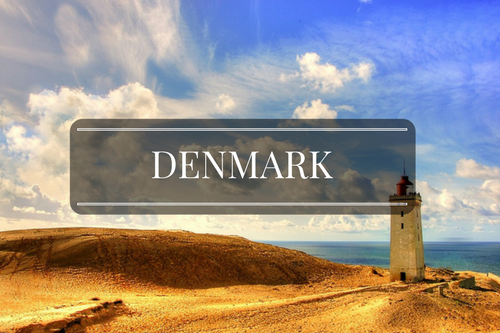
There were a number of factors making Denmark occupy the top spot in the happiness ratings last year, and it has only slipped down one place to second this year.
For one thing, the working week in Denmark is 37 hours. Leisure is an important part of the culture in Denmark and employees get 5 weeks of holiday annually. Danes spend their leisure time on social gatherings, engaging in sports, dabbling in theatre or joining a book club. Happiness for most families in Denmark is leaving work on time, heading home and having an intimate family dinner.
The Danish word ‘hygge’ implies cozy get-togethers with family and friends. During winter, this could be as simple as settling down in front of the fireplace. In spring and summer, hygge revolves around taking walks in the park, sitting by the beach or visiting quaint sidewalk cafés. Danes strive for hygge all the time and this could be the reason why Denmark is such a happy place.
Denmark is also one of the most egalitarian societies in the globe. The government makes available an excellent healthcare system, which provides free access to hospitals. Schools and universities are free. There are generous unemployment benefits. The comprehensive welfare system gives residents a feeling of security that puts them at ease, confident that the system will support them in case of illness or unemployment. The Danish experience of happiness also involves trust as an important factor. This could be trusting the system, the work environment, schools, the police force and neighbors.
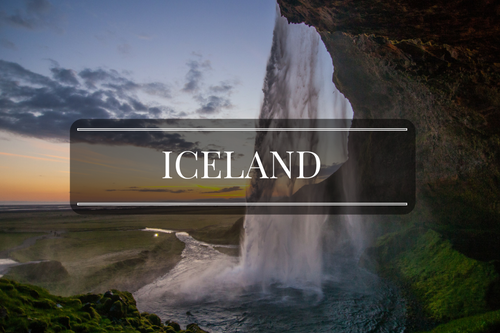
Iceland has consistently featured among the top five happiest nations in the world. Iceland is a naturally beautiful destination and its inhabitants take a keen interest in caring for and preserving the natural habitat. The country has a multitude of stunning places to visit across the country, such as waterfalls, volcanoes, hot springs, glaciers and caves. There is no problem with pollution in the country.
The government in Iceland is dedicated to looking after the health of its residents. Healthcare involves only the actual cost of medical care and does not add high or unreasonable amounts of fees as is done in other parts of the world. Hospital fees and prescription medications are affordable. In addition, men and women still get 80 percent of their income even under maternity or paternity leave, which amounts to nine months.
Iceland is a happy country also because of the diet, which consists of healthy foods such as lamb and fish. Icelanders are known to be optimistic people who view setbacks in a positive way.

Switzerland performs excellently in a number of measures of the OECD Better Life Index. It performs above average in terms of subjective well-being, health status, social connections, jobs and earnings, education and skills, and personal security.
One can’t buy happiness with money, but it can be used to attain a higher standard of living. The average household disposable income in Switzerland is above the OECD average. However, the gap between the richest and poorest is wide.
Also above the OECD average is Switzerland’s employment measure, in which 80 percent between the ages of 15 and 64 have a paid job; and its life expectancy measure, wherein life expectancy at birth is nearly 83 years. Switzerland performs well in terms of the quality of fresh air and water. The sense of community is strong in Switzerland and 93 percent of Swiss people reported that they know someone on whom they could depend in difficult times.
When they were asked to rank their overall satisfaction with life on a scale from zero to ten, they gave it a 7.6 grade, which was one of the OECD’s highest scores.
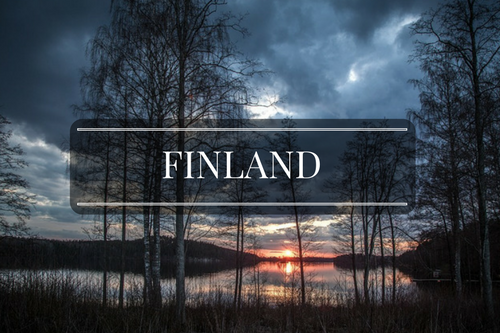
Despite its persistent cold and its long episodes of darkness, Finland still emerges as one of the world’s happiest places to live. The country offers its residents a high quality of life – literacy rates are high, and so are life expectancy rates. Corruption levels are extremely low by world standards, and the income gap too is quite modest in comparison with many other developed as well as developing countries. Workers in Finland enjoy a good work-life balance.
There are also other, more subjective factors that indicate the levels of happiness in a country. For example, the New Economic Foundation’s (NEF) ‘National Accounts of Well-being’ project studies what citizens of European countries themselves have to say about their own happiness. When it came to Finland, the project data showed that there was a high “absence of negative feelings”, even though the reported level of “positive feelings” was only a little above average. This offers an interesting insight, and shows that the Finns fall into the “contentment” range of the scale. Finland may not display the American ideal of happiness, which is more an idealistic state of overflowing with joy. But like other Northern European nations, in Finland the emotional range is more controlled, and they display fairly high levels of happiness without the emotional rise and fall that other countries display.
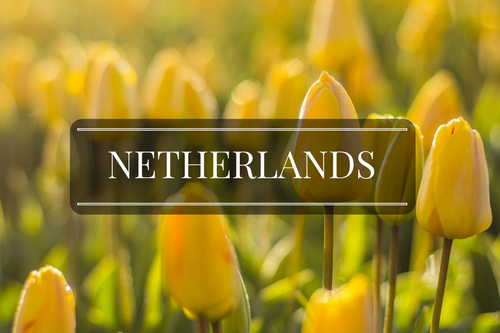
The Netherlands jumped one place from seventh to sixth in this year’s World Happiness Report. One of the contributing factors could be gezelligheid, a Dutch term that can be roughly translated to cozy, fun, or indicative of a nice atmosphere. It can also refer to belonging or time spent with dear ones or the general bonding of people that gives one a warm feeling. It may appear similar to the Danish concept of hygge, but actually refers to a more down-to-earth sensation that makes people feel warm inside.
The Dutch place great emphasis on family and friends, and the quality of these relationships are integral to their happiness and wellbeing. They also keep themselves healthy through daily exercise and balanced meals. The idea of happiness may be closely connected to health, and the healthier a person is, the happier they may seem. The Netherlands ranks at the top spot in the UNICEF League Table of Child Well-being, which examines the five dimensions of material well-being, health and safety, education, behaviors and risks, and housing and environment. The Netherlands emerged in the top five in all dimensions.
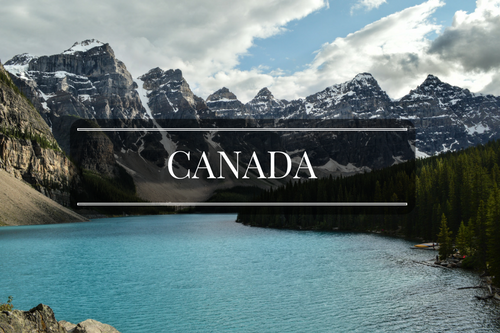
Canada is a diverse country, with a healthcare system that matches international standards. People from across the world move to Canada for better opportunities. It is one of the top immigration destinations in the world with nearly 250,000 overseas nationals approved for Canadian immigration every year.
Canada is among the world’s wealthiest countries and has one of the highest standards of living across the globe. It is known for its stunning natural beauty and for welcoming immigrants from different parts of the world. This makes Canada also one of the most multicultural countries on earth; one out of every five residents originates from a different region of the world. Canada was also named second best in the world in the first edition of the ‘Best Countries’ ranking from U.S. News & World Report.

